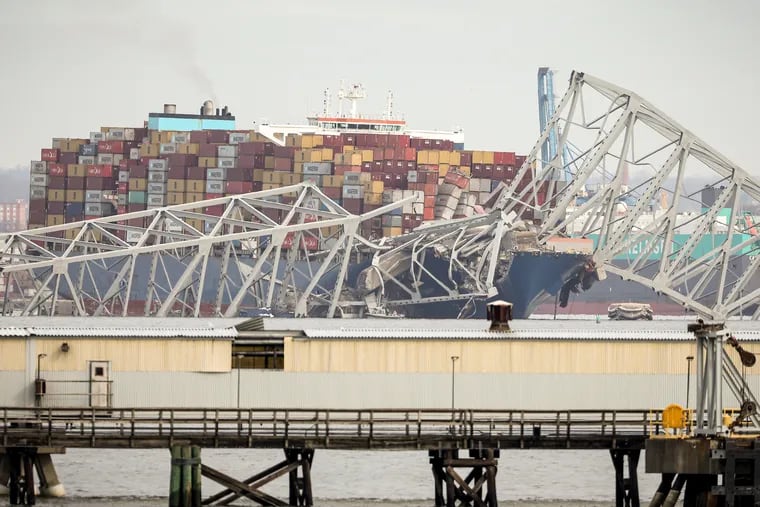In Baltimore bridge collapse disaster, reminders of our shared humanity
Call me naive, but at a time when we are hopelessly divided over matters both trivial and weighty, I’m hoping this calamity can be a unifier.

Imagine you’re a construction worker, doing repairs on a bridge. It’s 1:30 in the morning, and your eyes are bleary, but in the distance you see a ship moving in your direction. You ignore it because you’ve seen ships pass under this bridge a thousand times.
But this time is different, because the ship’s lights flash, and as the vessel approaches on an angle that’s not quite right, the early morning quiet gives way to a loud crash. The bridge buckles, metal twists, and chaos erupts as everything collapses into the frigid water below.
It’s not difficult to envision the terror felt by those who were on the Francis Scott Key Bridge early Tuesday morning, when the crew of the cargo ship Dali lost control of its propulsion, hit a column in the water, and a bridge that was a mile and a half long — a bridge that had stood for nearly five decades — went tumbling into the Patapsco River.
Six construction workers who had been repairing potholes on the bridge are missing and presumed dead. Two other workers were rescued, and now, as the search for other possible victims has ground to a halt, two questions remain: How did this happen — and why?
The “how” will be examined by experts much wiser than myself. As for the “why,” that’s a harder question. In difficult moments like these, we ask why with the full realization that we can never truly know the answer. Yet, I can’t help wondering if we can draw something more than grief from this disaster.
Call me naive, but at a time when we are hopelessly divided over matters as trivial as mask-wearing and as weighty as our elections; when race and class are the drivers of hatred and injustice, I’m hoping this calamity can be a unifier.
In Baltimore, where the Key Bridge has long served as a landmark for both residents and visitors, the sight of the structure jutting out from the river in pieces has to be jarring. For that reason alone, I expect that those who live there will come together to repair what their community has lost.
For the rest of us, however, such catastrophes represent more than the annihilation of a structure. They represent a peek at our mortality.
In the moments before the Dali rammed a column on the bridge, the crew notified authorities, and a dispatcher managed to get police to stop cars from driving onto the structure. It all took about 90 seconds, and in that precious fraction of time, lives were saved.
When life itself is measured out in seconds. When salvation comes through a mayday call. When the living and the dead are separated by the distance of a police car from the entrance to a bridge, it doesn’t matter whether we support Joe Biden or Donald Trump. Our racial identity is of no consequence. When our ability to draw the next breath is the measure of our value, our identities don’t matter nearly as much as we think.
For me, the lesson is not about what we can know. It’s about what we can’t.
In times like these, I see myself in the faces of the workers who perished. They were Mexican, Guatemalan, and Salvadoran, they were human beings, and their families will grieve just as yours or mine would. They will wonder how the outcome could have been different.
For me, the lesson is not about what we can know. It’s about what we can’t.
We never know when our last moments will be. But in the time we have, we should laugh often, love hard, and use the gifts we have to make a difference.
We should tend to the spirit on the inside as much as we tend to our appearance on the outside. And that way, when that moment comes, we will know we loved and laughed and lifted up others as much as we lifted ourselves. Because if we can know that, when our time arrives, we’ll know we have lived a life that mattered.